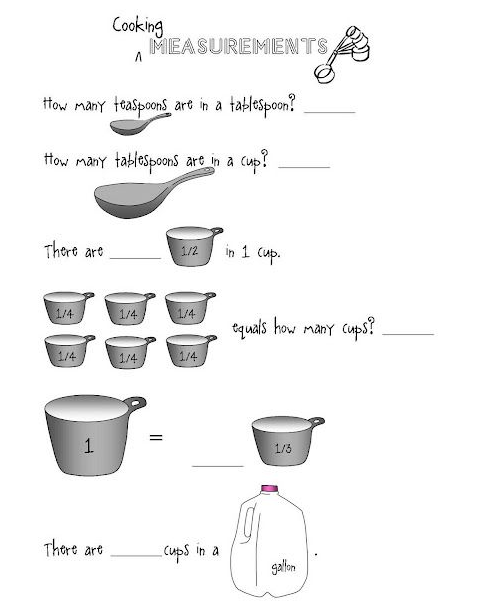The Nerdy Cooking Tips and Facts that Will Amaze Kids

As a parent that’s interested in getting their kids interested in science, it might seem impossible to think of activities that you can do at home. Even if you’re not a self-proclaimed scientist, there are plenty of phenomenal activities that the whole family can participate in to teach children about anything from understanding the importance of measuring ingredients to learning about temperature.
Below are some great family oriented activities designed for kids of all ages that not only teach them about science but also about using the kitchen to their advantage.
Tip 1: Work with Heat and Cold
Interested in teaching your kids something about temperature and how heat and cold can affect different types of elements? There are plenty of ways that you can use temperature to your advantage when it comes to cooking with kids, we recommend using something as simple as cake batter and an ice cream maker.

Heat: Whip up your favorite batch of cookies, showing your kids how dough becomes softer as your hands warm it up and even more soft once placed in the oven. Once they’re finished cooking and removed from the oven, show your children how the cookies cooling down as a result of being exposed to a lower temperature causes them to get harder.
Cold: If there’s one thing kids surely appreciate it’s ice cream, and why not try making your own ice cream at home meanwhile showing your children about how cold can affect liquid? When you pour the cream into a bowl you can clearly see that it’s a liquid and by adding sugar and tossing it into an ice cream maker with ice and salt, it turns into a solid.
Tip 2: Use Baking to Show Chemical Reactions
Chemical reactions are arguably one of the most prevalent aspects of science that your kids will learn about when they’re in school and it can be the perfect opportunity to teach them about how certain ingredients can affect others meanwhile baking a loaf of bread or even a homemade cake.
You can show your kids how certain ingredients, such as baking powder, can cause a cake to rise or how adding yeast helps to make bread become fluffy. As your final product is baking, you can point out that the bubbles in the mixture are what cause the cake or bread to rise, a typical chemical reaction that we see on a daily basis.
Tip 3: Teaching Measurements
When you’re working on science experiments, particularly those pertaining to chemicals, you’re undoubtedly going to need to work with measurements. By taking advantage of using measuring ingredients as a learning opportunity, your kids will be able to learn about how a certain amount of liquid added to a solid can cause it to become runny or tough.

Another interesting aspect of teaching measurements while baking or cooking is that you can teach your children about the importance of fractions and wholes, for example, the difference between once cup and a quarter cup.
This particular cooking experiment is simple, as all you’ll need is a measuring cup and whatever ingredients you’d put into the meal you’re preparing. Tell your children how much of each ingredient you need and then have them fill the measuring cup to the right amount.
Tip 4: Growing Your Own Vegetables at Home
There are plenty of avenues of science that you can go down with your children, one of which being agriculture and understanding what plants need in order to grow. This is a particularly fun experiment for kids of all ages because they’ll not only have the opportunity to see how plants grow over a period of time, but they’ll also have the responsibility of taking care of something other than themselves.
We recommend using some type of vegetable, such as green onions, to show children how they can maintain their own food at home, plus, it doesn’t take a lot of effort and materials which makes it an affordable experiment with little mess.
All you’re going to need is a cup of water, green onion stems, and a bright and sunny place to keep them. Once you’ve used the majority of the stalk of the onions, place the roots in a cup of water and put it in a sunny location in your home, preferably on a windowsill. As the days go by, your children will begin to notice the roots growing out of the stalk and eventually the entire onion will begin to grow drastically.
This is the perfect opportunity to tell your children about the importance of sunlight during photosynthesis, the importance of watering plants, and above all, how easy it is to set up a sustainable garden from the comfort of their own home.
Tip 5: Eating Dandelions

Do you remember ever being a child and wondering if you were able to eat the brightly colored plants growing around the yard only to be told no. Well, in reality, there are plenty of wild flowers that contain a phenomenal amount of nutrition that could support a human being if they were stranded in the wild. However, during this experiment you’re going to have to tell your children to not randomly pick up flowers and eat them, as some are dangerous, and poisonous. Dandelions, on the other hand, are the perfect way to not only teach your kids about nutrition but about finding ingredients for meals outside of the grocery store.
Tip 6: Egg Throwing and Physics
Although this might not be an activity that can take place directly in the kitchen, it does have to do with ingredients that you use on a regular basis. With the combination of eggs and a sheet hung on a drying line, you’ll be able to teach your kids about force, motion, and speed.
By hanging a sheet from trees that you have outside, have two kids hold the bottom of the sheet above the ground so it makes a U shape. Have the other children throw eggs at the sheet as hard as they can, and as they are caught in the sheet you can teach them about how force applied to an object will prevent it from moving (the law of motion).
Start an At-Home Science Experiment Today!
Doing at-home cooking experiments with the kids to teach them about science has never been easier. You only need a few essential components and you’ll be well on your way to educating them about anything from molecule movements to the importance of heat and cold.
Pin for later

